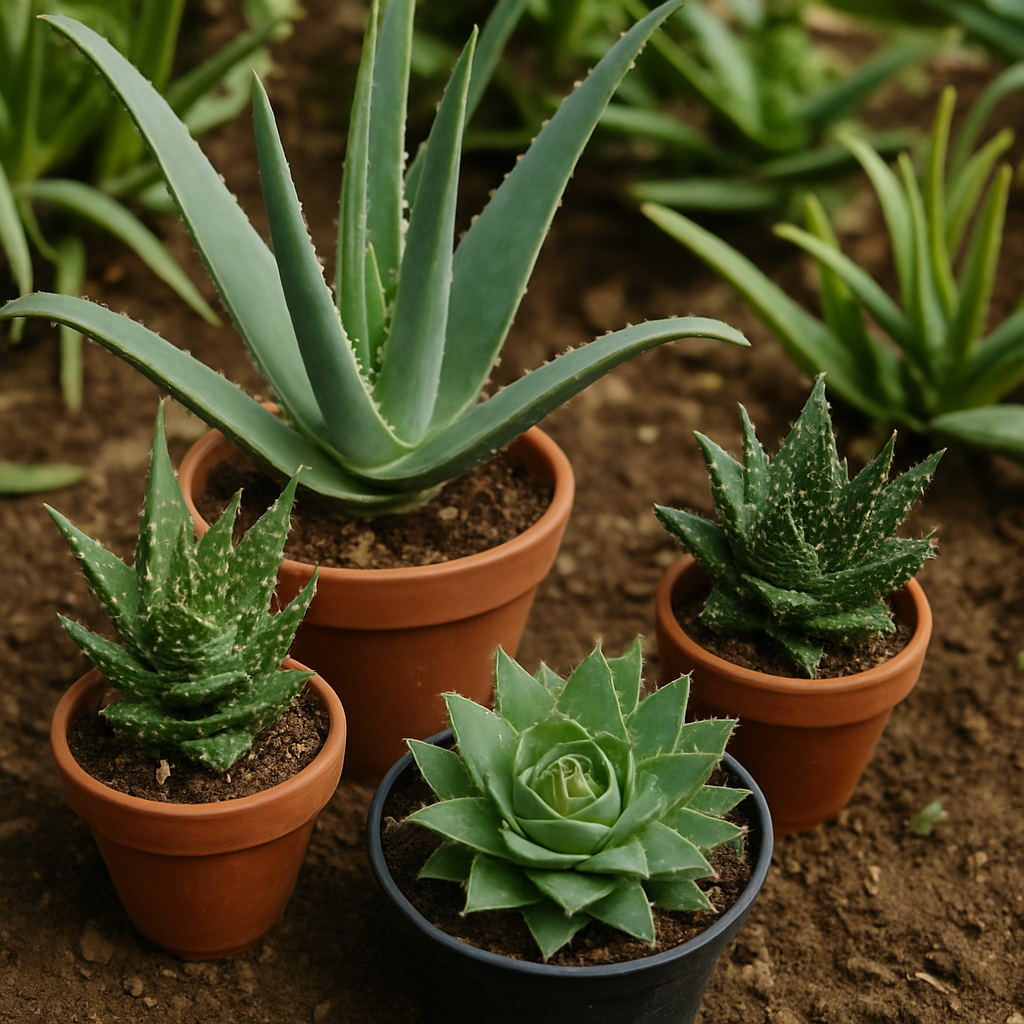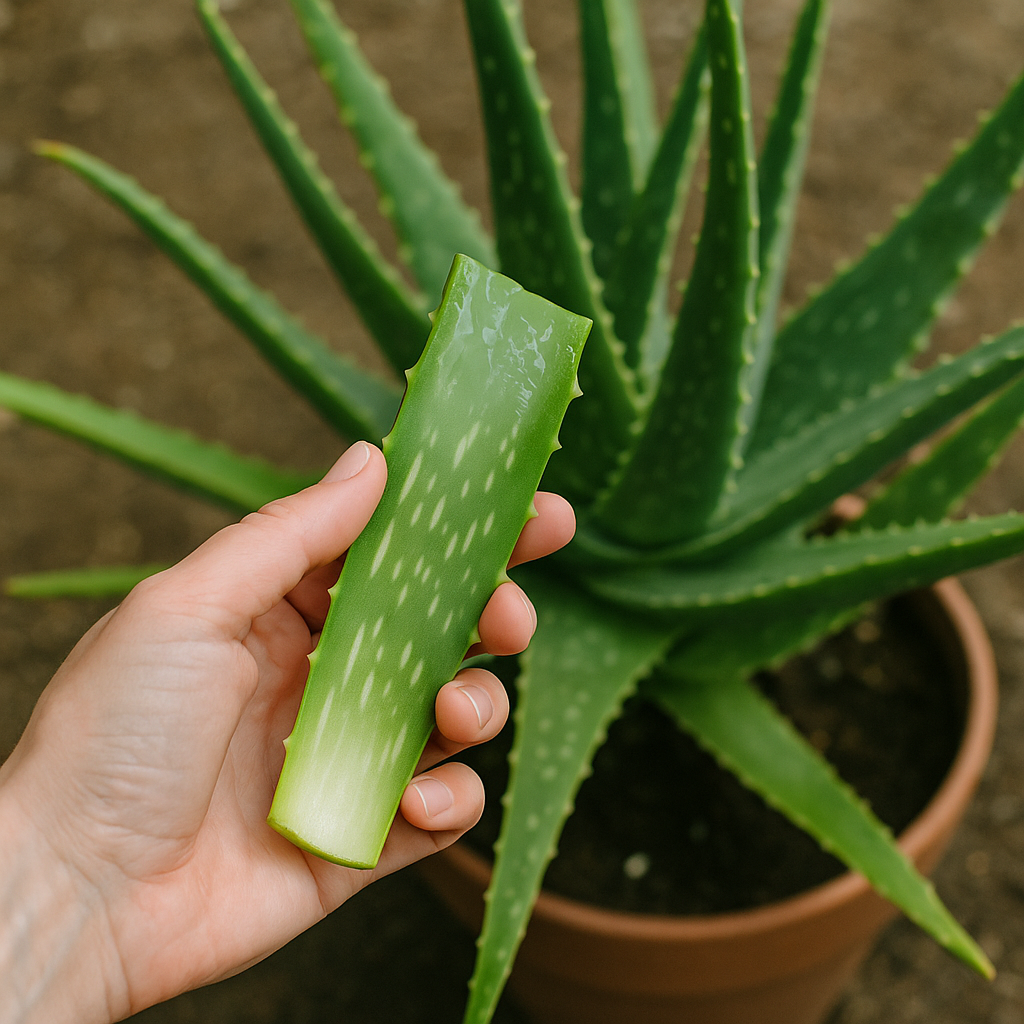Ask Ayurvedic doctor a question and get a consultation online on the problem of your concern in a free or paid mode. More than 2,000 experienced doctors work and wait for your questions on our site and help users to solve their health problems every day.
Shop Now in Our Store
Which Type of Aloe Vera Is Good for Skin: Varieties and Benefits

When it comes to natural remedies for glowing, healthy skin, aloe vera is usually at the very top of the list. But here’s the thing—there are different types of aloe vera, and not every single one is equally beneficial for skin. People often ask: which type of aloe vera is good for skin? Or, how many types of aloe vera are there anyway? Understanding aloe vera plant types and their unique properties can help you pick the one that truly works for hydration, soothing, and healing. In this article, we’ll break down the different types of aloe vera, explain what they actually do for your skin, and help you figure out which variety might be the best fit for you.
Aloe Vera and Skin Health
What Aloe Vera Does to Skin
Aloe vera has been used for centuries as a skin healer. The gel inside its leaves contains vitamins (like A, C, E, and B12), minerals, antioxidants, and enzymes that work together to soothe irritation, boost moisture, and speed up wound healing. That’s why people use it for sunburns, acne scars, dryness, and even small cuts.
When you apply aloe, it creates a light protective layer while deeply hydrating your skin. Some users notice a cooling effect almost instantly. And unlike many commercial creams, pure aloe gel is lightweight and absorbs quickly, so it doesn’t leave your face feeling greasy.
Is Aloe Vera Good for All Skin Types?
Good question. In general, yes—aloe vera is good for all skin types because it’s non-comedogenic (meaning it won’t clog pores) and gentle. However, there are exceptions. If your skin is extremely sensitive, you might experience mild itching or redness. In that case, it’s smart to do a patch test before applying it widely.
Oily skin types may love aloe because it hydrates without adding extra oil. Dry skin types often find it relieves tightness. Even combination skin tends to benefit, making aloe a rare “one-size-fits-most” solution.

How Many Types of Aloe Vera Exist?
When people say “aloe vera,” they usually mean Aloe barbadensis miller, the most popular and widely used species. But here’s the surprise: there are actually over 400 different types of aloe vera plant known to science. Of those, only a handful are widely studied or used in skincare.
Different Types of Aloe Vera Plant
Not every species is suitable for skin care. Some different types of aloe vera are ornamental, grown mainly for looks rather than healing. Others contain compounds that may irritate instead of soothe. That’s why it’s important to know which type of aloe vera plant is good for skin before grabbing just any variety from your garden or local store.
Common Aloe Vera Plant Types
Among the hundreds, only a few are considered safe and beneficial for topical use. These include:
-
Aloe barbadensis miller – the most common, found in skincare gels and creams.
-
Aloe ferox – known for its strong bitter sap and medicinal properties.
-
Aloe perryi – often grown in the Arabian Peninsula, with gel similar to barbadensis.
-
Aloe arborescens – a bush-like type with strong soothing properties.
These are the primary aloe vera plant types that come up when we talk about skincare. Some are more potent than others, and in the next section, we’ll dive into which type of aloe vera is best for skin.
Which Type of Aloe Vera Is Good for Skin
So now we get to the big question: which type of aloe vera is good for skin? Out of the hundreds of varieties, Aloe barbadensis miller is generally recognized as the best for skincare. It’s the one most commonly used in beauty products, DIY remedies, and even in medical treatments. The gel inside its thick leaves is clear, soothing, and packed with nutrients that make it ideal for direct application.
That said, other types of aloe vera can also help, depending on your skin’s needs. Aloe ferox, for example, has a more bitter juice but is highly effective for detoxifying and regenerating skin tissue. Aloe arborescens, with its thinner leaves, is slightly less juicy but still provides strong soothing and anti-inflammatory effects.
If you’re asking, which type of aloe vera plant is good for skin, the short answer is: barbadensis miller is the safest and most versatile, but others like arborescens and ferox can offer additional benefits if used properly.
Best Aloe Vera Plant Types for Skin Benefits
Popular Varieties of Aloe Vera for Skin Health
Here’s a closer look at the top contenders:
-
Aloe barbadensis miller – The gold standard in skincare. Hydrates, heals burns, calms acne, and reduces redness. Almost every commercial aloe gel you buy uses this variety.
-
Aloe arborescens – Known as the “candelabra aloe,” this type is popular in Japan and parts of Europe for both skin and internal health. It’s slightly more bitter but praised for faster skin repair.
-
Aloe ferox – Native to South Africa, its gel is rich in antioxidants and has stronger anti-aging properties. Some skincare companies use it in premium formulations.
-
Aloe perryi – Less common globally but valued in traditional Arabian medicine for its cooling and anti-inflammatory properties.
Comparison of Types of Aloe Vera and Their Properties
-
Barbadensis miller: Best overall for general skin care; safe for most skin types.
-
Arborescens: More medicinal; useful for scars and burns.
-
Ferox: Potent antioxidants; good for mature or aging skin.
-
Perryi: Cooling, calming; often used for rashes or irritation.
While all four can be applied topically, barbadensis remains the most accessible and easiest to use for daily skin care routines. Others might require more knowledge or careful handling.

Using Aloe Vera for Skin Care
Aloe Vera Recipes for Hydration and Healing
Once you know which type of aloe vera is best for skin, the fun part is using it. Here are a few simple ways to add it to your routine:
-
Pure Aloe Gel Mask: Slice open a fresh aloe leaf (preferably barbadensis), scoop out the clear gel, and apply directly to your face. Leave it on for 15–20 minutes, then rinse with lukewarm water. Great for hydration and calming redness.
-
Aloe + Honey Soother: Mix one tablespoon of aloe gel with one teaspoon of raw honey. This combo moisturizes deeply and has antibacterial properties, perfect for acne-prone skin.
-
Aloe Ice Cubes: Freeze aloe gel in an ice tray. Rub a cube on sunburnt or irritated skin for instant cooling relief.
-
Aloe Scrub: Combine aloe with a small amount of sugar or oatmeal to make a gentle exfoliator. Helps remove dead skin while keeping moisture locked in.
A small warning: don’t overuse raw aloe (especially varieties like ferox). A little goes a long way, and if your skin feels tight or itchy, it’s time to give it a break.
Conclusion
Aloe vera is more than just a trendy skincare ingredient—it’s a time-tested natural healer with real benefits. Still, the fact that there are different types of aloe vera means not all varieties work the same way. If you’ve ever wondered which type of aloe vera is good for skin, the safest answer is Aloe barbadensis miller. It’s hydrating, calming, and widely available. But that doesn’t mean the others are useless—Aloe arborescens, Aloe ferox, and Aloe perryi also offer unique properties that can help with specific concerns like aging, scars, or irritation.
The key is knowing which type of aloe vera plant is good for skin and making sure you’re using it in the right way. Always patch test first, especially if you have sensitive skin. And remember: even natural remedies can cause reactions in some people, so “natural” doesn’t always equal “risk-free.”
Whether you’re dealing with dryness, redness, or you just want that healthy glow, aloe vera can be a reliable addition to your skincare routine.
FAQs
1. Can all aloe plants be used on skin?
Not exactly. While there are over 400 types of aloe vera plant, only a small number are considered safe for skincare. Aloe barbadensis miller is the most recommended. Others like Aloe ferox and Aloe arborescens are also beneficial, but many ornamental varieties aren’t suitable and may even irritate your skin.
2. What form of aloe vera is best for skin?
Fresh gel straight from the leaf is ideal because it’s pure and free from preservatives. However, if you don’t have access to a plant, store-bought gels containing Aloe barbadensis miller can also be effective. Just check the ingredients list to make sure aloe is the main component (and not buried under fillers or alcohols).
3. Which type of aloe vera is not good for skin?
Some species contain higher levels of aloin, a compound that can be irritating. Ornamental varieties, often grown just for decoration, aren’t recommended for skin use. It’s better to stick to the well-known aloe vera plant types that have been studied for skincare, especially barbadensis miller.
Final Thoughts
So, now you know: there are many types of aloe vera, but only a handful are truly helpful for your skin. If you’re serious about natural skincare, start with Aloe barbadensis miller—it’s the one most trusted by dermatologists, herbalists, and everyday users around the world. Try experimenting with simple DIY recipes like aloe masks or aloe-honey blends, and see how your skin responds.
And hey—don’t just keep this knowledge to yourself! If you found this article helpful, share it with friends or family who also wonder about what aloe vera does to skin. Chances are, they’ll thank you for the tip.
Your skin deserves the best care, and sometimes the answer really does come from nature. Aloe vera just happens to be one of those gifts you can grow right on your windowsill.
This article is checked by the current qualified Dr Sujal Patil and can be considered a reliable source of information for users of the site.

